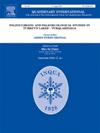Reappraising the timing and spatial pattern of the Little Ice Age in China: full-field insights from the Last Millennium Climate Reanalysis Project version 2.1
IF 1.8
3区 地球科学
Q3 GEOGRAPHY, PHYSICAL
引用次数: 0
Abstract
Site-specific and regionally-composited temperature reconstructions confirmed the presence of the Little Ice Age (LIA) in certain areas of China over the last millennium. However, a country-wide view of the LIA in China is still lacking, leading to ongoing debates about whether the LIA was a coherent, nationwide cold period. This study addresses this gap by analyzing the timing and spatial pattern of the LIA across China using the Last Millennium Climate Reanalysis. Key findings include: China experienced broadly cold conditions during the last millennium, but the LIA onset was notably asynchronous, in contrast to the near-synchronous termination of the LIA across China. Peak cooling occurred at different times in various regions, e.g., the 13th century in most of southern China, the 18th century in the eastern and western parts of the Qinghai-Tibet Plateau, and the 19th century in other areas. Generally, the magnitude of peak cooling increased with latitude. EOF analysis suggests the first mode accounts for 68.53 % of the total variance in temperature variability during 1200-1900 AD and indicates spatial consistency in temperature variability during this period. Weakening solar irradiance since the late 12th century is identified as the primary driver of these variations. The second mode explains 15.05 % of the total variance and reveals a north-south dipole pattern. Teleconnection factors such as the North Atlantic Oscillation and the Atlantic Multidecadal Oscillation significantly influence this mode. However, various monsoon systems across northern and southern China may play more important roles in this mode. The third mode accounts for 5.56 % of the total variance and displays tri-pole pattern (north-center-south), largely influenced by variations in the Pacific Decadal Oscillation, volcanic eruptions, and greenhouse gases. These findings provide full-field insights into the spatiotemporal characteristics of the LIA in China and enhance our understanding of this historical climate event.
中国小冰期时间和空间格局的再评价:来自上千年气候再分析项目2.1版的全方位洞见
特定地点和区域复合温度重建证实了过去一千年中国某些地区小冰期的存在。然而,在中国仍然缺乏一个全国范围内的关于LIA的观点,这导致了关于LIA是否是一个连贯的、全国性的寒冷时期的持续争论。本研究利用“上千年气候再分析”(Last Millennium Climate Reanalysis)分析了中国LIA的时间和空间格局,从而弥补了这一空白。主要发现包括:在过去的一千年中,中国经历了广泛的寒冷条件,但LIA的开始明显是非同步的,而中国各地的LIA几乎是同步结束的。不同地区的降温高峰出现在不同时期,如13世纪中国南方大部分地区、18世纪青藏高原东部和西部地区以及19世纪其他地区。一般来说,峰值降温的幅度随纬度增加而增加。EOF分析表明,第一模态占1200 ~ 1900年气温变率总方差的68.53%,表明该时期气温变率具有空间一致性。自12世纪后期以来太阳辐照度的减弱被认为是这些变化的主要驱动因素。第二模态解释了15.05%的总方差,并揭示了南北偶极子模式。北大西洋涛动和大西洋多年代际涛动等遥相关因子显著影响这一模态。然而,中国北部和南部的各种季风系统可能在这种模式中发挥更重要的作用。第三模态占总方差的5.56%,表现为北-中-南三极型,主要受太平洋年代际涛动、火山喷发和温室气体变化的影响。这些发现提供了对中国低热时空特征的全面认识,增强了我们对这一历史气候事件的认识。
本文章由计算机程序翻译,如有差异,请以英文原文为准。
求助全文
约1分钟内获得全文
求助全文
来源期刊

Quaternary International
地学-地球科学综合
CiteScore
5.60
自引率
4.50%
发文量
336
审稿时长
3 months
期刊介绍:
Quaternary International is the official journal of the International Union for Quaternary Research. The objectives are to publish a high quality scientific journal under the auspices of the premier Quaternary association that reflects the interdisciplinary nature of INQUA and records recent advances in Quaternary science that appeal to a wide audience.
This series will encompass all the full spectrum of the physical and natural sciences that are commonly employed in solving Quaternary problems. The policy is to publish peer refereed collected research papers from symposia, workshops and meetings sponsored by INQUA. In addition, other organizations may request publication of their collected works pertaining to the Quaternary.
 求助内容:
求助内容: 应助结果提醒方式:
应助结果提醒方式:


